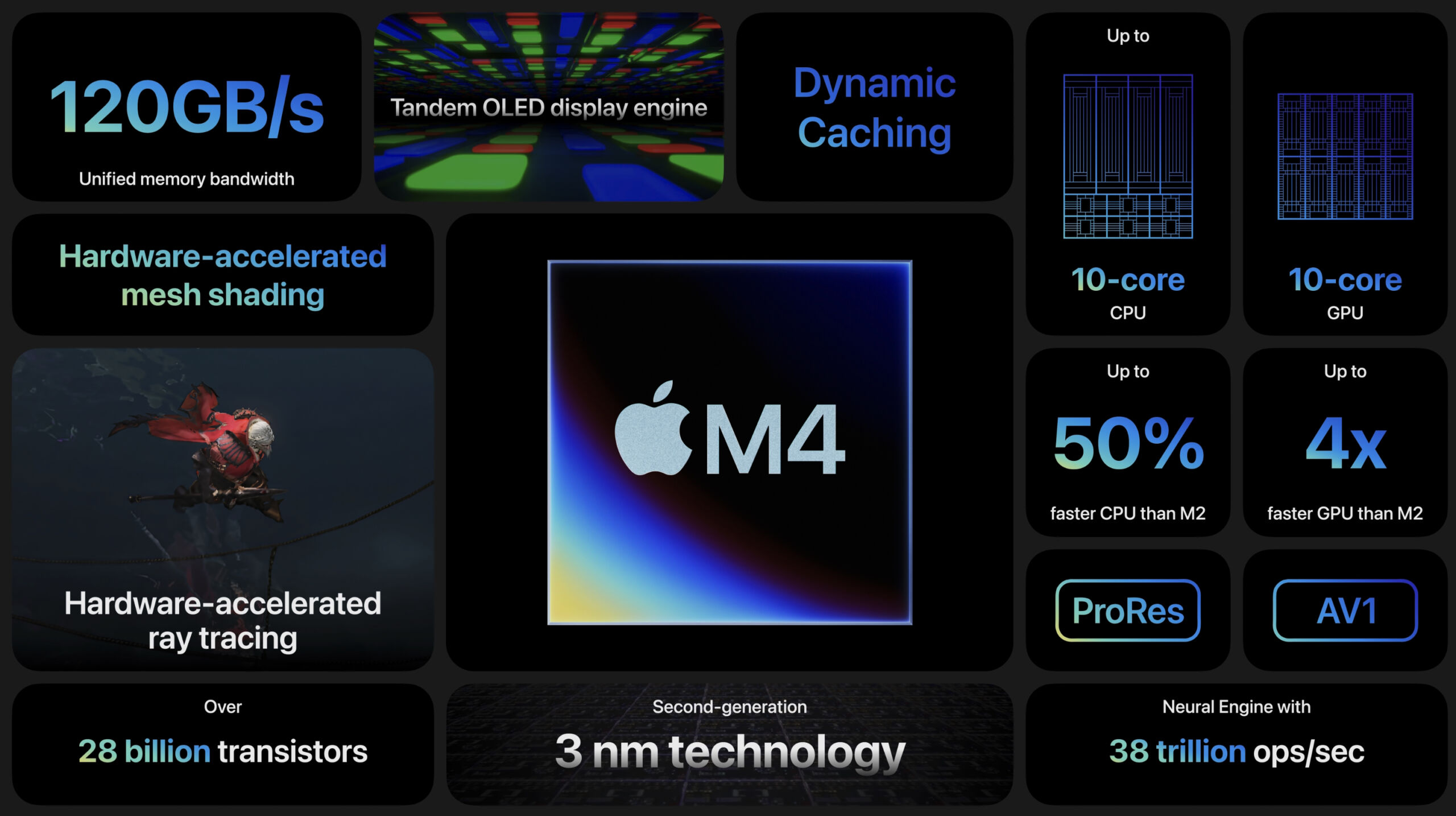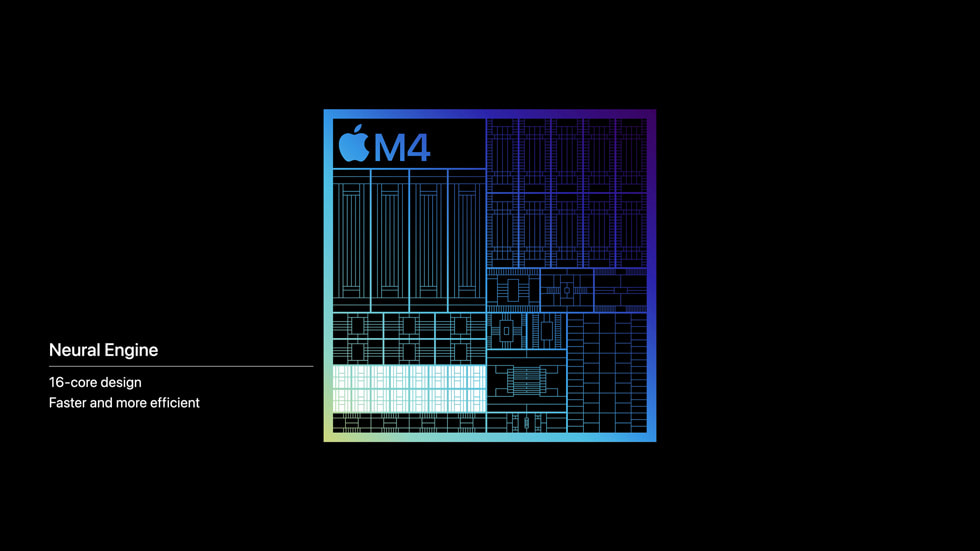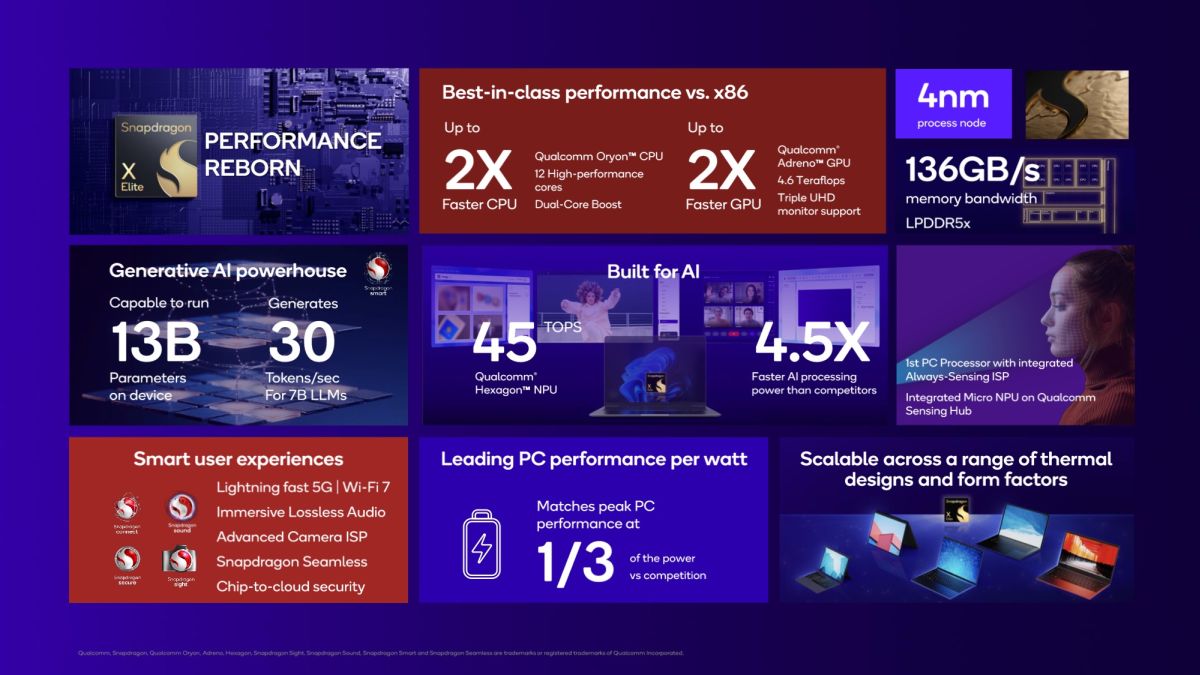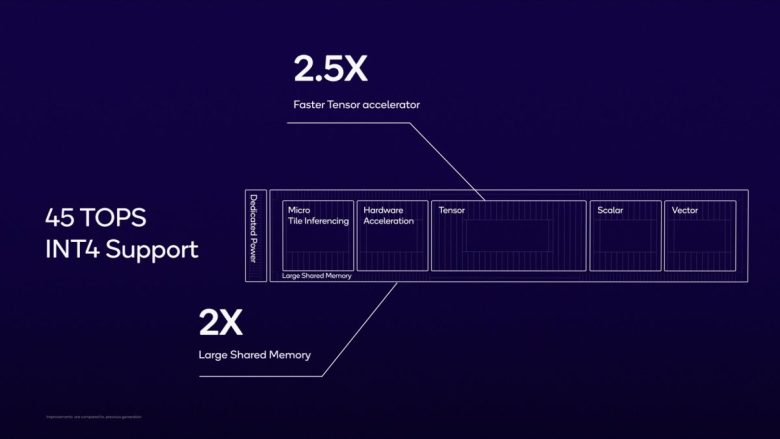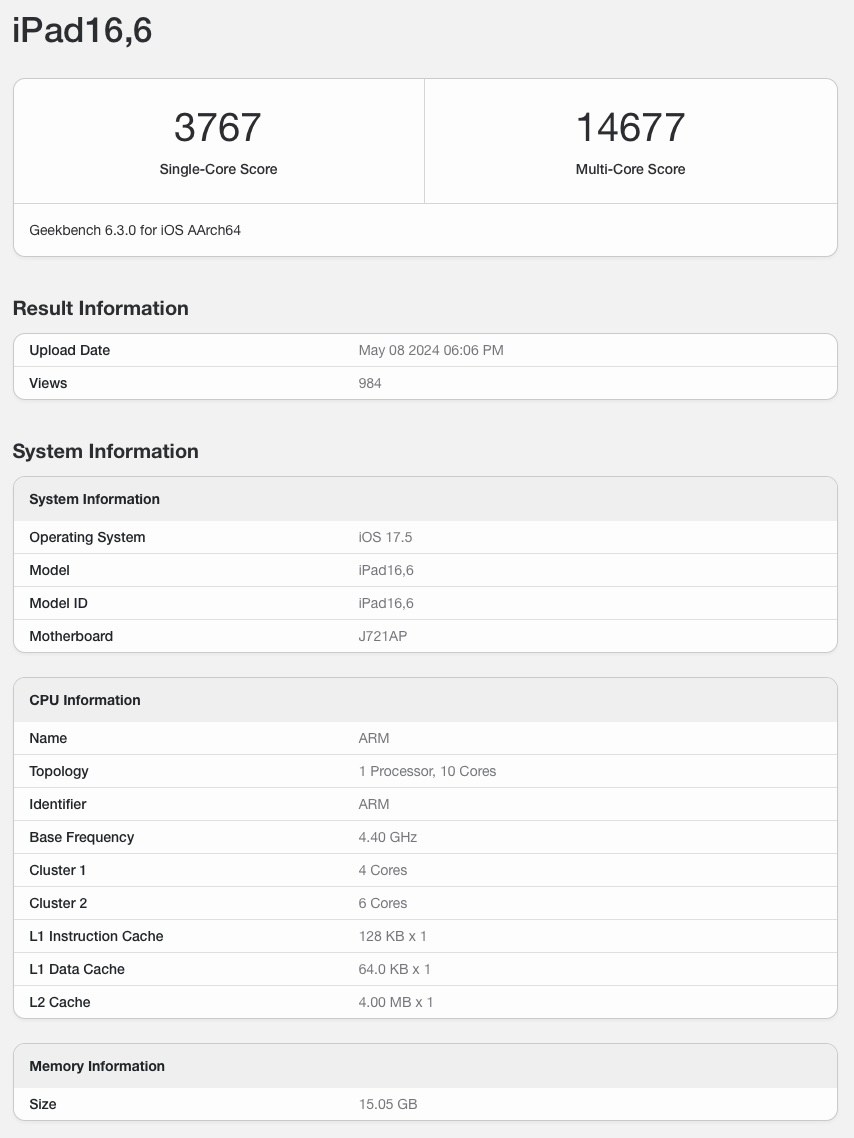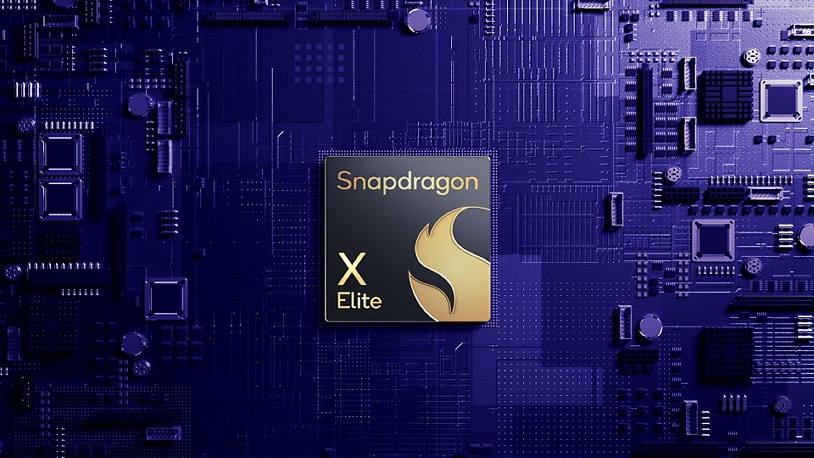AI Summary
The M4 chip features a 10-core CPU that delivers 1.5x faster performance than the previous M2 chip, with up to four times as much graphics performance. The chip also boasts an 38 trillion operations per second (TOPS) Neural Engine, making it one of the most powerful AI processors on the market, and supports hardware-accelerated ray tracing, mesh shading, and high-performance machine learning capabilities.
Add M4 benchmark data, comparison with Snapdragon X Elite, and ASUS AI PC - May 8 2024
Apple has once again pushed the boundaries of silicon technology with the introduction of its latest M4 chip. The M4 is a system on a chip (SoC) that delivers phenomenal performance to the all-new iPad Pro while advancing the industry-leading power efficiency of Apple silicon. Built using second-generation 3-nanometer technology, the M4 enables the incredibly thin design of the iPad Pro and features an entirely new display engine to drive the stunning precision, color, and brightness of the breakthrough Ultra Retina XDR display.
M4's Powerful CPU and GPU
At the core of the M4 chip lies a new CPU with up to 10 cores, delivering up to 1.5x faster CPU performance compared to the already powerful M2 chip found in the previous iPad Pro. This boost in performance enhances pro workflows across various apps, such as working with complex orchestral music files in Logic Pro or applying highly demanding effects to 4K video in LumaFusion.
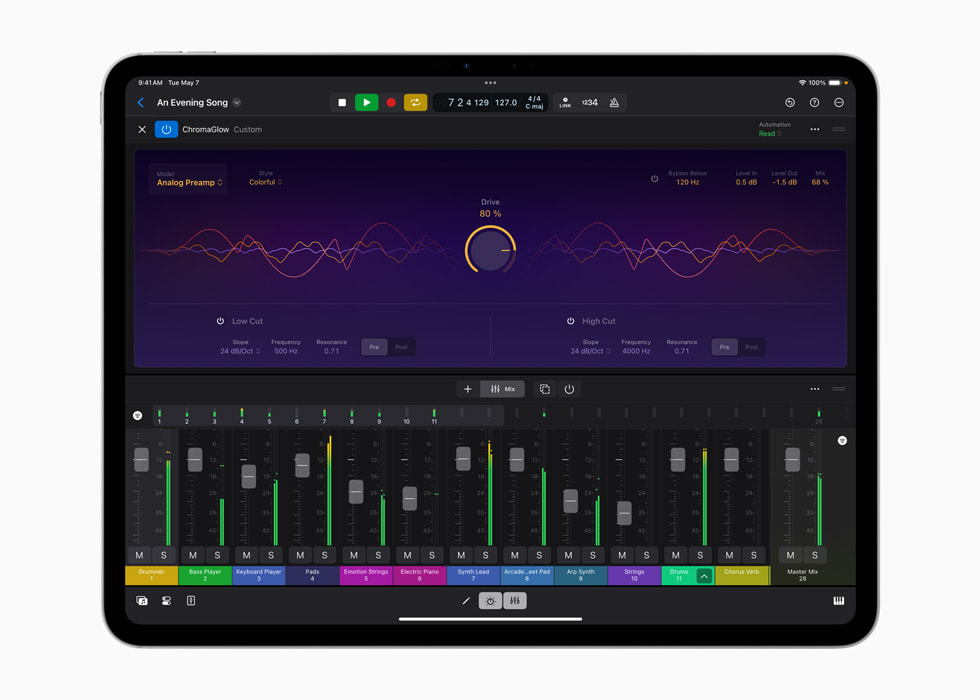
The M4's new 10-core GPU is building upon the next-generation GPU architecture introduced in the M3 chip. It brings Dynamic Caching, an Apple innovation that dynamically allocates local memory in hardware and real-time, dramatically increasing GPU utilization and performance for the most demanding pro apps and games. For the first time, the M4 chip brings hardware-accelerated ray tracing and mesh shading to the iPad Pro, enabling more realistic shadows, reflections, and visually complex scenes in games and graphics-intensive apps. Pro rendering performance in apps like Octane receives a massive boost, now up to four times faster than on the M2 chip.
Apple's performance estimates say that the M4 has 50 percent faster CPU performance and four times as much graphics performance. Like the GPU in the M3, the M4 also supports hardware-accelerated ray-tracing to enable more advanced lighting effects in games and other apps. Due partly to its "second-generation" 3 nm manufacturing process, Apple says the M4 can match the performance of the M2 while using just half the power.
Apple's Most Powerful Neural Engine Ever
The M4 chip features Apple's most powerful Neural Engine to date, capable of an astonishing 38 trillion operations per second (TOPS) – 60x faster than the first Neural Engine in the A11 Bionic chip. Combined with next-generation machine learning (ML) accelerators in the CPU and a high-performance GPU, the M4 chip makes the new iPad Pro an outrageously powerful device for artificial intelligence tasks. Users can now accomplish amazing AI feats quickly and on-device, such as isolating a subject from its background throughout a 4K video in Final Cut Pro with just a tap or automatically creating musical notation in real-time in StaffPad by simply listening to someone play the piano.
One of the key features of the M4 chip is its ability to run AI apps on-device, using AI inference powered by the chip's powerful Neural Processing Unit (NPU). This has several benefits for users:
- Privacy: By running AI apps on-device, sensitive user data doesn't need to be sent to the cloud for processing, enhancing privacy and security.
- Speed: On-device AI inference eliminates the need for data to be sent to and from the cloud, reducing latency and enabling faster, more responsive AI applications.
- Offline functionality: AI apps can continue to function even when the device is not connected to the internet, as they don't rely on cloud servers for processing.
- Efficiency: The M4's powerful NPU is optimized for AI workloads, allowing for efficient processing that minimizes the impact on battery life.
M4 Advanced Media Engine and Display
The M4 chip's Media Engine offers support of popular video codecs like H.264, HEVC, and ProRes. It also introduces hardware acceleration for AV1 to the iPad for the first time, providing more power-efficient playback of high-resolution video experiences from streaming services.
The M4 chip features an entirely new display engine designed with pioneering technologies, enabling the stunning precision, color accuracy, and brightness uniformity of the Ultra Retina XDR display. This state-of-the-art display is created by combining the light of two OLED panels, a testament to the M4 chip's capabilities.
M4 Geekbench on iPad16,3
According to the
Geekbench benchmarking website that features the iPad16,3, matching a higher-end M4-powered iPad with a 10-core ARM processor with 16GB RAM. The Machine Learning 0.6.0 score obtained by the tablet was 9,234, which is around 22.9% better than the M2-powered iPad Pro’s 7511. When compared the M4 iPad Pro’s ML performance with an M3 14-inch MacBook Pro, it is showing a 10.4% improvements (8365 vs. 9234).
Comparison with Qualcomm's Snapdragon X Elite
Apple is not alone in the race to bring powerful AI capabilities to personal computing devices. Qualcomm, a leading chipmaker, has been providing its Snapdragon chipsets to PC companies like Asus, who recently announced that it would introduce its first 'AI PC' based on
Qualcomm's Snapdragon X Elite system-on-chips later this month. These new SoCs are expected to bring together high performance, on-device AI acceleration, and long battery life, potentially reshaping the PC market in the coming quarters.
The Qualcomm Hexagon NPU delivers up to 45 TOPS of AI performance. Qualcomm says its chip is also the “first PC processor with an integrated always-sensing ISP” that can be used to detect if a person is front of the computer or eye tracking. This allow a PC to lock the screen when you look away, automatically center you in the frame during video calls, or make it appear as if you’re looking at the camera when you’re actually glancing a bit to the side.
Snapdragon X Elite is capable of running generative AI LLM models over 13B parameters on-device. It also includes the updated dual Micro NPU inside the ultra-low power Qualcomm® Sensing Hub for enhanced security, login experience and privacy, including the ability to wake the device when in sleep mode.
Keep in mind that the M4's 38 TOPS is based on INT8, while the 45 TOPS number from Qualcomm is based on INT4. According to
NVIDIA Benchmark Data, INT4 precision can potentially bring an additional 59% speedup compared to INT8, which means the 45 TOPS (INT4) benchmark number could be around 28 TOPS (INT8). The Apple M4 38 TOPS (INT8) can possibly be 35% better than the Qualcomm Snapdragon X Elite 28 TOPS (INT8) in ML performance.
The competition between Apple and Qualcomm in the AI chipset market is set to drive innovation and push the boundaries of what's possible with on-device AI capabilities. As more powerful and efficient NPUs are developed, users can expect to see a wider range of AI-powered applications and experiences on their personal computing devices, from advanced image and video processing to natural language understanding and beyond. In terms of benchmarks, Qualcomm is showing the Snapdragon X Plus and will possibly beat out the Apple M3 in multi-threaded CPU performance, while the X Elite as the flagship is 28% faster.
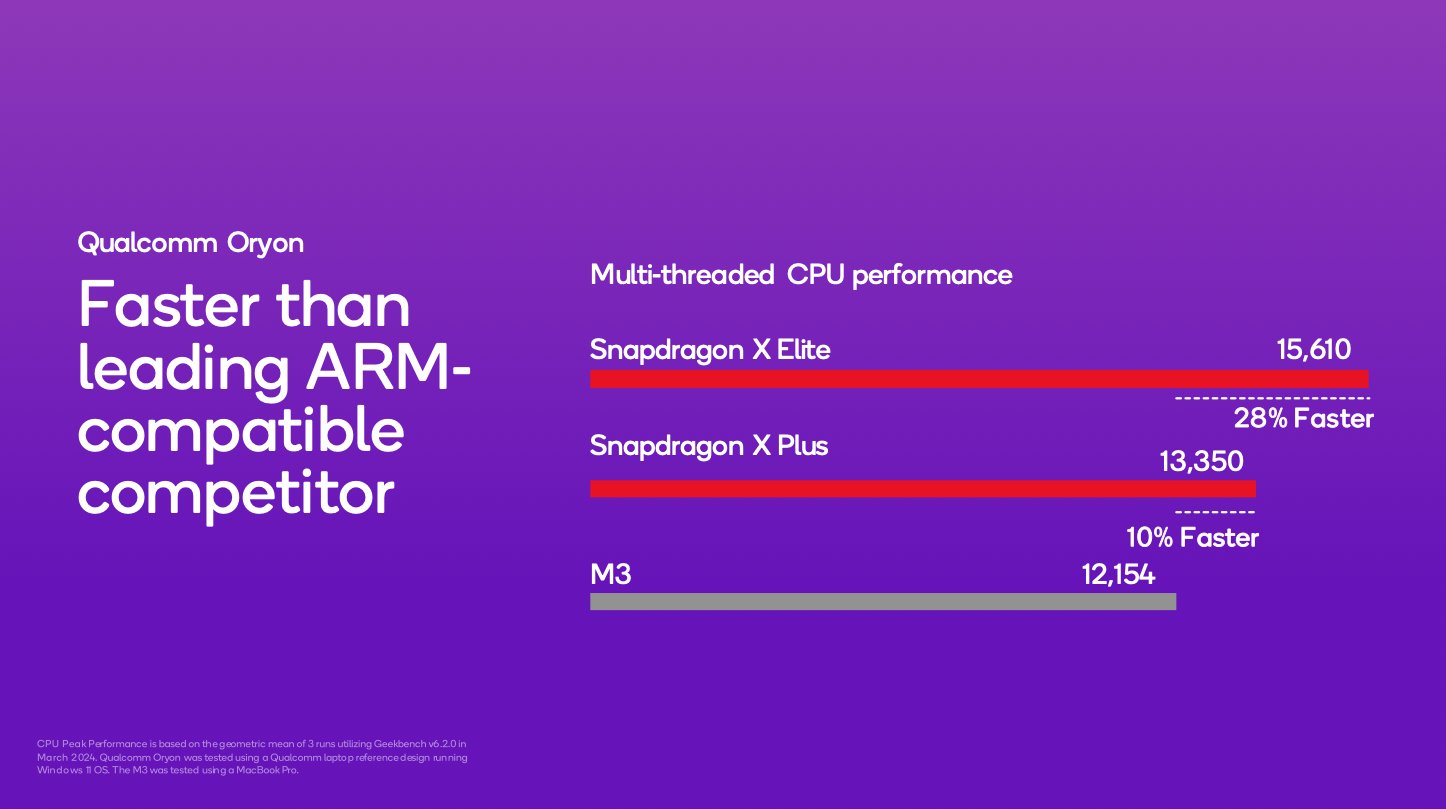
The Apple M3 outperforms the M2 by about 17% in single-core tasks and approximately 21% in multi-core tasks in benchmark tests. Apple claims that M4 is 50% faster than M2 in CPU performance. If we do the math, the new Apple M4 is about 24% faster than M3 in CPU performance, meaning the M4 is unlikely to beat the Snapdragon X Elite performance that's claiming to be 28% faster than M3.
[Updates] Another
Geekbench data came up showing an iPad16,6 M4 multicore score of 14,677, which kind of in-line with my calculations above. Showing M4 performance roughly sit between the Qualcomm Snapdragon X Elite and X Plus.
While benchmark comparisons provide valuable insights into the potential performance of upcoming products, it’s important to remember that these are often based on theoretical models or benchmark assumptions. Therefore, they may not accurately represent the final product’s performance. It’s often more beneficial to wait for the actual product to be released before making definitive judgments about the M3 and Snapdragon X Elite performance comparison.
ASUS AI PC Based on Qualcomm Snapdragon X Elite
ASUS said that it would announce its first 'AI PC' based on Qualcomm's Snapdragon X Elite system-on-chips later this month. The new laptop is set to be introduced at the
Next Level AI Incredible virtual launch event on May 20.
The launch of Asustek's new Vivobook S 15 will be hosted by Asus and will be joined by representatives of Qualcomm and Microsoft, who will reveal how they collaborated with PC maker to develop the first notebook based on Qualcomm's Snapdragon X Elite processors. These new SoCs promise to have a significant impact on the PC market in the coming quarters as they are based on the Arm instruction set architecture and are expected to bring together high performance, on-device AI acceleration, and long battery life.

In conclusion, the introduction of Apple's M4 chip marks a significant milestone in the evolution of personal computing and AI capabilities. With its industry-leading performance, power efficiency, and on-device AI inference, the M4 chip sets a new standard for what's possible with mobile computing devices. As competition in the AI chipset market heats up, consumers can look forward to a future where AI-powered experiences are seamlessly integrated into their daily lives, thanks to the powerful NPUs and advanced silicon technologies being developed by companies like Apple and Qualcomm.
Recent Posts



